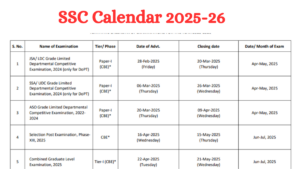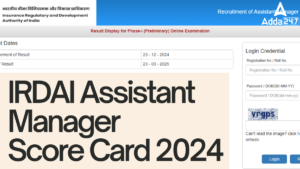Reasoning is a game of wits and presence of mind! Yes, it is true and it might seem as the greatest of the challenge after English Section’s surprises but yet this one can easily be dealt with. You just need correct practice and hardwire your brain to quickly make decisions of what to attempt and what to leave. Practice with these new pattern reasoning question for NICL AO Mains Exam.
Directions (1-5): Study the given information and answer the questions:
A word and number arrangement machine when given an input line of words and numbers rearranges them following a particular rule in each step. The following is an illustration of an input and rearrangement.
Input: most 17 part 48 of 29 country 54 become 35 advance 36
Step I: advance most part 48 of 29 country 54 become 35 36 18
Step II: 35 advance most part 48 of 29 country 54 35 18 become
Step III: country 35 advance most part 48 of 54 35 18 become 30
Step IV: 47 country 35 advance part of 54 35 18 become 30 most
Step V: of 47 country 35 advance part 54 18 become 30 most 36
Step VI: 53 of 47 country 35 advance 18 become 30 most 36 part
And Step VI is the last step of the rearrangement of the above input.
As per the rules followed in the above steps, find out in each of the following questions the appropriate step for the given input.
Input: there 8 will 7 be 24 no 29 significant 16 change 19
Q1. In which step the elements ’24 29 siginificant’ found in the same order?
(a) Step I
(b) Step II
(c) Step III
(d) Step V
Q2. In step IV, which of the following words would be at 6th to the left of 3rd from the right end?
(a) 23
(b) be
(c) 7
(d) no
(e) None of these
Q3. How many step required completing the above arrangement?
(a) Three
(b) Four
(c) Six
(d) Seven
(e) Five
Q4. Which of the following would be the step V after arrangement?
(a) there 24 no 7 be will 16 8 change 20 significant 30
(b) there 23 no 7 be will 16 8 change 21 significant 30
(c) there 23 no 7 be will 16 8 change 20 significant 29
(d) there 23 no 7 be will 16 8 change 20 significant 30
(e) None of these
Q5. What is the difference between the number which is third from left in Step IV and the number which is second from right in Step VI?
(a) 23
(b) 7
(c) 30
(d) 15
(e) None of these
Directions (6-10): Each of the questions below consists of a question and two statements numbered I and II given below it. You have to decide whether the data provided in the statements are sufficient to answer the question.
Read both the statements and given answer:
(a) if the data in statement I alone are sufficient to answer the question, while the data in statement II alone are not sufficient to answer the question
(b) if the data in statement II alone are sufficient to answer the question, while the data in statement I alone are not sufficient to answer the question
(c) if the data either in statement I alone or in statement II alone are sufficient to answer the question
(d) if the data given in both statement I and II together are not sufficient to answer the question, and
(e) if the data in both statements I and II together are necessary to answer the question.
Q6. What does ‘sx’ mean in a code language?
I. ‘na si la lo’ means ‘you may cry now’ and ‘ne si na sx’ means ‘he may cry there’ in the code language.
II. ‘ki se sx bo’ means ‘come there and meet’ and ‘se ni bo ki’ means ‘come here and meet’ in that code language.
Q7. What is Shivani’s rank in a class of 50?
I. Anni, ranking 18th in the class from the top, is 7 ranks below Vani, who is 5 ranks above Shivani.
II. Suman, the 10th from the bottom, is 20 ranks below Surmai, who is 5 ranks below Shivani.
Q8. How many children are there in the row of children facing North?
I. Somya is third from the left end of the row and is third to the left of Kirti.
II. Rashi is fifth from the right end of the row and is third to the right of Kirti.
Q9. A, B, C, D and E are sitting around a circular table facing the centre. Who is to the immediate left of C?
I. Only A is between E and B.
II. D is to the immediate left of B.
Q10. In a row of five person P, Q, R, S and T are sitting facing North, who among is in the middle of the row?
I. Person S and Q are at the two extreme ends of the row.
II. Person T is to the right of person R.
Directions (11-15): Study the following information carefully and answer the questions given below.
There are ten students are sitting in twelve seats in two parallel rows containing five students on each, in such a way that there is an equal distance between adjacent students. In row 1, A, B, C, D and E are seated and all of them are facing south, and in row 2, P,Q, R, S and T are sitting and all of them are facing north. One seat is vacant in each row. Therefore, in the given seating arrangement each member seated in a row faces another member of the other row. All of them have a different favorite subject i.e. Hindi, English, Sanskrit, Urdu, Art, Math, Science, Economics, Biology and Physics.
A sits second to left of one, whose favorite subject is Hindi. Either A or the one, whose favorite subject is Hindi, seats adjacent to the extreme end position. T sits one of the extreme ends of the row. There are three students sit between T and S, whose favorite subject is English. Immediate neighbor of T faces B. One of immediate neighbor of B faces R, whose favorite subject is Sanskrit. There are no vacant seats adjacent to R. C’s favorite subject is Urdu and sits second to left of vacant seat. One of immediate neighbor of R is Q. Q’s favorite subject is Art. One of immediate neighbor of Q faces D. D’s favorite subject is Math. The one whose favorite subject is Science sits immediate left of the one whose favorite subject is Economics. The one whose favorite subject is Biology sits third to left of one whose favorite subject is Physics.
Q11. Who among following sits on the extreme end of the row?
(a) E,Q
(b) B,P
(c) B,S
(d) D,P
(e) None of these
Q12. Whose favorite subject is Physics?
(a)P
(b)R
(c)Q
(d)T
(e)S
Q13. Who among following sits second to left of T?
(a) S
(b) P
(c) R
(d) Q
(e) None of these
Q14. Who among following sits opposite to C?
(a) P
(b) Q
(c) R
(d) S
(e) T
Q15. Whose favorite subject is Science?
(a) A
(b) B
(c) C
(d) D
(e) E




 The Hindu Review October 2022: Download ...
The Hindu Review October 2022: Download ...
 SSC Calendar 2025-26 Out, Check SSC CGL,...
SSC Calendar 2025-26 Out, Check SSC CGL,...
 IRDAI Assistant Manager Score Card 2024 ...
IRDAI Assistant Manager Score Card 2024 ...




